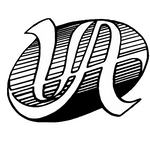
Chosin Fires by James Dietz
Hand signed and numbered by the artist, James Dietz.
Includes certificate of authenticity.
Image Size: 12.5" x 25"
Overall Size: 19" x 31"
1000 Military Edition
100 Artist Proof Edition
250 Publisher Proof Edition
US Army & Marine Field Artillery print.
In the history of warfare, many battles have made manifest the fact that when forces join on the field of battle, Field Artillery firepower is the element of combat that makes a difference. Such was the case in late November and early December 1950 at the Chosin Reservoir in the Republic of Korea.
This epic conflict, characterized by misery, cold, exhaustion, and sacrifice, portrays an epic 17-day struggle between primarily U.S. and Chinese Communist Forces. To say the conditions were tough is an understatement. The bitter cold cut so deeply that the men became numb and the equipment ceased operating. When the opportunity arose to change boots, soldiers could see the ice crystals that had formed between their toes; some died while advancing, merely from the shock of the coldness. The fluid in the howitzers recoil systems became more like glue, and at night, the only way to keep the men and the guns warm was to keep them firing. That worked out well, as there was no shortage of targets.
The Chinese military had sent 10 Divisions, 120,000 of its very best troops south that November with orders to annihilate the US and its allies "to the last man.” These were not farmers or conscripts; most of the Chinese troops were veterans of the victorious campaigns against Chiang Kai-shek''s Nationalist forces. They came to Chosin looking for a fight, and that’s just what they got.
The battle at Chosin was ripe for heavy firepower, but the sea was 70 miles away, thus no naval gunfire; and the weather was often unfit for flying, thus affecting air support. Just as so many times before, consistent firepower was in the able hands of the King of Battle – the Field Artillery. The Chinese Communist Forces didn’t count on the ferocity or the tenacity of American soldiers and marines, nor did they anticipate the shocking blow they would be dealt by the Redlegs sent to keep watch over them.
Outnumbered six to one, the Allied forces chose retrograde operations, and began the long march through narrow, mountainous defiles south to Hagaru-Ri. Field Artillery of every kind supported the U.S. forces: Army and Marine Corps, light and heavy cannons; towed and self-Propelled howitzers; Active and Reserve Forces destroying enemy targets with direct and indirect fires. Many redlegs alternated between fighting as artillerymen or as infantry, whatever the battle required, while leapfrogging their way back to relative safety.
This vast mix of fire support came together to create effects so devastating to the enemy that when it was over, the nearly impossible had happened: seven of the ten Chinese Communist divisions were destroyed, and would never see combat again during the Korean War. America sacrificed many lives during those 17 days in the winter 1950, but in the end, what should statistically have been an irrefutable annihilation of American troops, was a lesson in Field Artillery and Firepower for our foes.
Determined forces of freedom lived to tell the story of those 17 days: of the unbearable cold, of the impossible odds, of the loss of comrades, and of the times when the effects of Field Artillery made the impossible suddenly seem possible, the hopeless seem attainable. These men, these heroes, will never forget the extraordinary role that they and their “Chosin Fires” played in an unforgettable chapter of our Field Artillery heritage.

